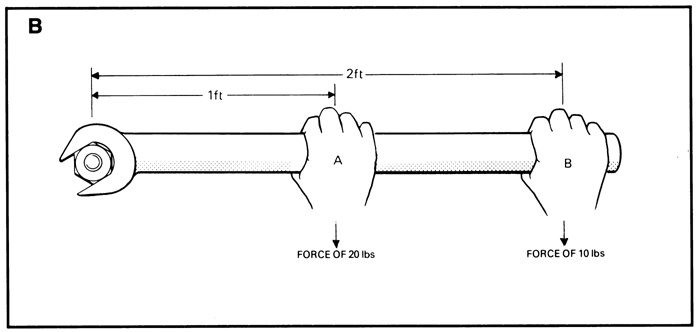Ask Ant is my way of turning an inbox of nightmares into useful content for you. Each question is taken from my inbox, and identities are always kept private. If you’re wondering how to ask a question, sign-up for this thing. I send out weekly notes with personal, honest training reflections and tips, book reviews and [...]
Ask Ant is my way of turning an inbox of nightmares into useful content for you. Each question is taken from my inbox, and identities are always kept private. If you’re wondering how to ask a question, sign-up for this thing. I send out weekly notes with personal, honest training reflections and tips, book reviews and suggestions, and the most recent blog posts from my personal email address. All you have to do is hit reply and type away.
—–
I’ve recently got back into training and never really had a set goal, only to become stronger (and maybe get involved in one of those wife carrying challenges, I always thought that would be fun however I have not been able to convince my wife the same). I’ve stuck with Jim Wendlers 5/3/1 and have had good success, especially in squatting and dead-lifting. However, when it comes to pressing I get to a point and completely hit a wall and that wall will last for months, and years in previous bouts with training. I’m a skinny guy, super skinny wrists, long and lanky. I stick to barbell overhead pressing and incline bench pressing. Do you have any advice in pushing through these walls? I’ve tried overhead pressing in a split stance, different grips (false and full with a fat grip) and still get stuck in the same place. Any advice would be greatly appreciated, even if its stop being a pansy zac and stay consistent.
I feel you. I’m a tall(er) guy being 6’4” and all. You also mentioned wrists—got some small wrists, too. This raises two flags in my books.
First, the size of your bones is big business. So big that I wrote about it here. Think of bones like a bookcase. If they’re bigger, you hold more books. Those with thinner bone structures won’t be build like those with thicker bone structures.

Second, having longer limbs makes for more torque insofar as holding a bar at lockout. If you deviate from the vertical line of downward force, you have to bring the bar back in balance. But with the longer lever arm, you’re dealing with a lot more torque during deviations from the vertical path. This makes for more work on your part, and more work usually = less strength.
Of course, I’m biased. I’ve always been a terrible presser, and I’ve spent my life trying to find out why. I think I’m partly right with my excuses, but I also think I’m making up stories just to help myself sleep at night.
Something excuse free though: pressing involves less muscle mass than most leg exercises and those muscles involved are smaller. Less muscles + smaller muscles = less strength. Your pressing will be weaker and stall earlier than most other lifts.
This means you should expect a slower rate of progress all around. 5/3/1 is nice and all, but your body isn’t linear. Adding five pounds to your pressing every month sounds nice and fun, but few will be able to continue that sort of progression over the long haul. Otherwise, everyone would just get infinitely strong with time.
You might have luck trying to add less weight (maybe two pounds or something) every month, but you might also have equally as much luck embracing the nonlinear. In other words, you can train submaximally for two months, test your max, and end up gaining 5 pounds on your max.
Here are some other things to consider:
Pressing will hinge on your bodyweight in most cases. The bench press is one of the few lifts that will gladly accept your lard for the better. If you aren’t gaining bodyweight at a decent clip, expect a slower rate of pressing progress. My best bench and overhead came when I weighed the most.
Don’t try to be a superhero on both your overhead press and bench press simultaneously. Alternate concentrations every once in a while.
Look into high frequency pressing routines. I have a memory in the back of my head saying that old timers used to have the philosophy: to overhead press a lot, you have to overhead press often. And an even more faded memory seems to bring back doing low rep work with that high frequency. Some scouring of The Tight Tan Slacks might be in order.
Learn how to create torque and tension at the shoulder. Since the shoulder is such a mobile joint, you really have to wind it up and keep it tight if you want to have a shot of stabilizing a heavy weight. Otherwise, the bar will be all over the place and then you’re back to the lever arm + torque folly mentioned at the front.
Don’t neglect that pressing strength won’t always be synonymous with specific aesthetic goals. The flat bench press can help build strength for both the incline and overhead press. Old school Olympic weightlifters used to do more benching because the overhead press was contested. Consider doing work to address your specific strengths and weaknesses.
Those are my pressing thoughts, and about all I can say. It’s up to you what you want to take home because I wasn’t a good presser. And, to boot, I don’t even barbell press anymore. I do weighted dips along with other gymnastics type training, but it’s been a while since I pressed a barbell or cared about chest aesthetics. It used to wrack my brain some time ago, but I’ve been able to move past that and, quite frankly, care more about the training of my skills and less about looks.